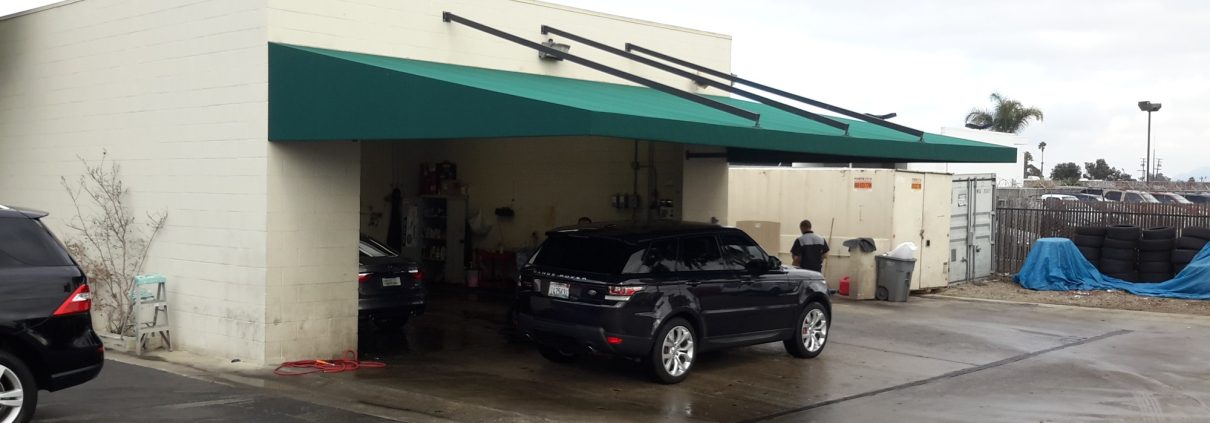Time to Replace or Repair Your Patio Awning
A patio awning can be a wonderful addition to your outdoor living space, providing shade and protection from the elements. It creates an inviting atmosphere where you can relax, entertain, and enjoy the outdoors without worrying about harsh sun rays or unexpected rain showers. However, like any other outdoor structure, patio awnings can wear out over time due to various factors, leaving you with a decision to make – whether to replace or repair your patio awning. In this article, we will explore the signs that indicate it might be time to take action and discuss the pros and cons of both options.
Signs that Your Patio Awning Needs Attention
- Visible Damage: The most obvious sign that your patio awning needs attention is visible damage. Look for tears, holes, or significant wear and tear in the fabric or material of the awning. These issues not only compromise the aesthetics of your outdoor space but also reduce the awning’s effectiveness in providing shade and protection.
- Fading and Discoloration: Over time, exposure to the sun and the elements can cause your patio awning fabric to fade and lose its original color. Discoloration not only looks unattractive but can also indicate that the material’s UV protection is diminishing, making it less effective at blocking harmful sun rays.
- Stains and Mildew: Stains, mold, and mildew can develop on your patio awning, especially in areas with high humidity or frequent rainfall. These not only detract from the awning’s appearance but also pose health risks. Mildew can also weaken the fabric and compromise its durability.
- Mechanical Issues: If your patio awning has a retractable mechanism, check for any problems with its operation. Is it difficult to open or close? Does it make unusual noises? These mechanical issues can be a clear sign that the awning’s moving parts are deteriorating.
- Frame Damage: Don’t forget to inspect the awning’s frame, whether it’s made of metal or another material. Rust, corrosion, or bent components can compromise the awning’s stability and safety.
- Inefficient Sun and Rain Protection: If your patio awning no longer provides adequate shade or fails to repel rainwater effectively, it’s time to address these functional issues. The primary purpose of an awning is to protect you and your outdoor furniture, so any decline in this regard should not be ignored.
- Outdated Design: Aesthetics matter, and an outdated or out-of-style awning can detract from the overall look of your outdoor space. If your awning no longer complements your home’s design or your personal preferences, it might be time for an upgrade.
Repairing Your Patio Awning
If your patio awning exhibits one or more of the issues mentioned above, repairing it can be a cost-effective and practical solution. Here are some benefits of repairing your patio awning:
- Cost-Efficient: Repairing your awning is often more budget-friendly than replacing it entirely. Simple repairs, such as patching up small holes or cleaning stains, can extend the life of your awning without breaking the bank.
- Environmentally Friendly: By choosing to repair your awning instead of replacing it, you contribute to reducing waste and conserving resources. It’s a more sustainable option.
- Preservation of Existing Features: If you love the design or style of your current patio awning, repairing it allows you to keep those features intact while addressing the issues.
- Quick Turnaround: In most cases, repairs can be completed relatively quickly, allowing you to enjoy your outdoor space without significant downtime.
However, there are limitations to what repairs can achieve. If your patio awning has extensive damage or has reached the end of its lifespan, repairing it might only be a temporary solution. In such cases, replacement might be the more prudent choice.
Replacing Your Patio Awning
When should you consider replacing your patio awning? Here are some situations where replacement is a better option:
- Severe Damage: If your awning has suffered severe structural damage or is beyond repair, it’s time for a replacement. Continuing to use a damaged awning can be dangerous and ineffective.
- Outdated Design: If your awning’s design is significantly outdated or doesn’t align with your current outdoor space aesthetics, it’s worth considering an upgrade to a newer and more stylish model.
- Improved Features: Newer patio awnings come with enhanced features such as better UV protection, motorized retractable systems, and advanced materials. If you want to enjoy the latest technology and benefits, a replacement might be the way to go.
- Increased Functionality: Maybe your current awning doesn’t provide the level of shade or rain protection you desire. Upgrading to a larger or more functional awning can greatly enhance your outdoor experience.
- Long-Term Investment: If you plan to stay in your current home for the long term, investing in a new patio awning can be a wise decision. A high-quality awning can add value to your property and provide years of enjoyment.
- Energy Efficiency: Some modern awnings are designed to improve energy efficiency by reducing heat gain in your home during the summer months. If you’re looking for ways to make your outdoor space more environmentally friendly, consider a replacement with energy-efficient features.
Conclusion
Deciding whether to replace or repair your patio awning depends on the specific condition of your current awning and your long-term goals. If the issues are minor and repairable, it makes sense to opt for repairs to extend the awning’s lifespan. However, if your awning is extensively damaged, outdated, or no longer meets your needs, a replacement might be the best solution.
Remember to consider factors like cost, environmental impact, aesthetics, and functionality when making your decision. Regardless of your choice, maintaining your patio awning through regular cleaning and proper care will help prolong its life and ensure that you continue to enjoy your outdoor oasis for years to come.
d





